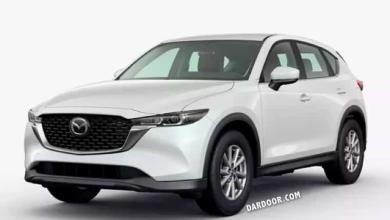
It doesn’t matter whether you’re a recent grad with your first real job or someone other than the prototypical first-time car buyer, the car-buying process is never filled with as much ambiguity as it is the first time. But no matter how much affection we develop for our high school hand-me-down or skateboard, at some point it’s time to move on. Being a good first-time car buyer isn’t easy, but if it’s worth doing — and it is — it’s worth doing well.
To that end, we’ve come up with some tips to help with the process. First, a little history: Car buying began in parallel with the first car sold. And despite credit given to Karl Benz for the automobile’s invention, we’ve not been able to find its first-time buyer. We’re guessing, however, Karl (under a banner reading “Karl’s First Cars”) unloaded it on an unsuspecting first-timer, probably a recent technical college grad with more short-term enthusiasm than long-term perspective.
We’ve compiled this list as a Top Ten, more than a little bit like Dave Letterman would compile it — if, of course, Letterman cared about what you drive. (Dave has a small collection of exciting cars to stoke his fire — along with a racing team…) Without further delay, a few tips on what to buy, how to buy it and where to buy it.
So, you’ve spent hours researching online, you’ve checked out all the models you’re interested in, and you’re finally ready to visit some dealers to settle on your first brand new car. We’ve got these tips for you before you even leave the house because most of this can be done from the comfort of your own home.
14. Get Preapproved for Financing
The teaser rate you see in the newspaper — sometimes as low as 0% — may not be available to you. To get that rate, you’ve got to have a gold-plated credit rating. If this is your first new car purchase, you might not qualify. Better to at least have some understanding of how much money you can afford to borrow before you’re trying to figure out the difference in monthly payments between the 0% you thought you qualified for, and the 3.9% you actually do.
13. Secure financing, or know your options
Financing issues are somewhat like the purchase price; there has been an exponential growth in the number of resources. That, however, is mitigated by your lack of credit history or, in an increasing number of instances, marginal credit history. The last thing you want, however, is to be in a room with an F&I (Finance and Insurance) rep, and he or she is holding all the cards; the deck — if you will — is stacked against you. Better to talk with your credit union, bank or insurance provider (many have the capability and desire to finance your purchase), and line up your financing in advance. You can always go with the dealer option if it’s competitive, but never approach it as if the dealer is the only money game in town. This is an important part to get right.
12. Establish a realistic budget
This figure is generally based on what you can afford per month. The ideal is to pay cash, but in most instances when considering a new (or just newer) car, the nature of the transaction price often requires the leverage of financing. So, look at your cost of living in all the more important areas, like shelter, food, health insurance and Happy Hour. Once those are calculated, the remainder could be spent on a car payment, fuel, car insurance and — for cars without a warranty — mechanical maintenance.
11. Know what you can spend monthly
While this may look similar to the previous tip, your level of indebtedness is different from your monthly commitment. Neither one — for a first-time buyer — should be out of balance in comparison to your other assets (at this point in your life those assets are probably limited to your most recent purchase at H&M). If you’re financing, figure $25/month for every thousand dollars that you borrow for 48 months, and $20/month on 60-month financing. It follows that every $10K borrowed is $250/month for four years, and $200/month for five. Again, this is the base obligation; insurance, fuel and periodic maintenance are above and beyond this.
10. Establish your transportation needs
We know. Despite our cautionary note, you have short-term enthusiasm UP TO HERE. A MINI Convertible or Fiat Cabriolet may be the car of the moment, but is it going to work for you as a day-in/day-out piece of transportation? Conversely, you may think you need a minivan or pickup for ALL OF YOUR STUFF, but on those occasions when you’re moving to a new apartment or, uh, moving home, you can rent a pickup. Given the cost of fuel, insurance and — in many cities — monthly parking, don’t buy what you don’t need. And perhaps consider renting what you need, only when you need it.
9. Identify and prioritize your wants
This runs a bit counter to the previous tip. The first-time purchase doesn’t need to be your be-all/end-all acquisition, but you should still pay attention to your want list, as this isn’t a process you need to repeat every 18 months. Better to stretch a bit for those things in a car that satisfies you, than to be hit over the head — and pocketbook — with buyer’s remorse before you’ve emptied the first tank of gas. If getting what you want costs $40/month more, spend it — and skip a couple of Happy Hours.
8. Test Drive Elsewhere
As much as you think driving that new car is part of the shopping process, you’re better off if you isolate your test drive from the actual purchase. More than ever before, manufacturers and dealer groups are subsidizing test drives at auto shows, and it’s a great time to sample some products without the pressure of buying that day. Also, follow the manufacturers on Facebook and sign up for newsletters. It often gets you into preview events where you can experience the car in a more relaxed setting.
With all of the online sources available for your basic research, we believe the importance of the test drive has been marginalized. Virtually nothing is more important in your decision process than how you feel behind the wheel. And so many variables come into play — seat height, wheel adjustment, steering feel, throttle tip-in, outward visibility, control layout, etc. — that you simply must spend a reasonable amount of time driving the car. And that time should be more than five minutes on someone’s idea of a stop-and-go test route. Take at least half an hour, while trying stop-and-go, freeway merging and freeway speeds. And if your sales rep — you know, the normal guy trying to make a living — don’t have the 30 minutes, find a time when he or she does, or take the time to find another dealership.
7. Do your research (it’s never been easier)
In that you’re reading this at one of the foremost websites for car purchasers, online research is also intuitive. There is, at this point, an amazing amount of both information and perspective on new cars and their late-model alternatives. Once you’ve digested it all, balance it with your gut instincts — or those instincts of someone whose gut you trust. And be proactive; if you see someone with a car you have an interest in — and they’re not doing 90 kilometres per hour — stop and ask them about their ownership experience.
6. Locate a convenient dealer
For most of car-selling history (we’re talking to you, Karl) the act of buying a car for the first time has run akin to getting a colonoscopy for the first time: Come in, lay down, you’re not gonna’ feel a thing. But despite our almost inherent misgivings, the salesman on the showroom is closer to a normal person than you might think. Most of the abnormal ones — we’ve heard from reliable sources — end up selling something less precious; let your parents worry about them. And while new and late-model cars have never been more reliable, they still need attention and that attention should be easy to access. When weighing a couple of choices — let’s say Mazda6, Kia Sportage and Honda Civic — compare dealer locations and, if all other things are equal, showroom environments. We tend to stay away from dealerships where two-thirds of the sales staff is sitting or standing at the front entrance.
5. Get Internet Quotes
Dealerships are incredibly savvy at providing information to you while you sit in the comfort of your own home. Using tools like BestRide.com, you can find the cars you’re interested in and contact the dealer directly for a quote. Armed with that information, based on cars that are actually on the lot, you can make a much more educated decision about buying your next car.
4. Determine the proper purchase price
Once you’ve decided what you like — and have already established what you can afford — it’s time to arrive at a purchase price. The Kelley Blue Book Fair Purchase Price gives you an accurate idea of what people have paid in your area for the car you have an interest in. A credit union should also be able to provide you with perspective and may have contact on the showroom floor. An important note regarding referrals: Get the referral before taking another salesman’s time for a walkaround and demo. Most of these people work on commission, and commissions are notoriously small. If you plan on working with a referral, start with a referral. Finally, when discussing what you want to pay, don’t reveal a “per month” number; that’s the oldest trick in the book. If you’re thinking you can budget $20K — and you’re looking at a $25K car — tell ’em $20K. You can always work up…while it’s much harder to back up.
3. Separate the Trade
Trading a used car is where a lot of novice car shoppers leave hundreds, even thousands of dollars on the table. If your used car has a lot of mileage, isn’t in great condition, or has a CarFax report that isn’t squeaky clean, that car is of little value to a new car dealer. You’re almost guaranteed to get more money for your used car if you sell it yourself on Kijiji, Craigslist or to your friends.
2. Service Your Current Car at the Dealer
This is going to sound counter-intuitive but try it. If you’ve made the decision to purchase a new car, sign up for the dealership’s email newsletter, which generally has service coupons that provide an oil change for less than what you’d pay to change your oil yourself. When you’re in the service lane, many dealers will make you an offer for a new car right there in the service lane. If you’ve done your homework, know what your trade is worth, know how much financing you’re approved for and have received a few internet quotes ahead of time, you could drive home in a new car in the time it takes to service your old one. At the very least, you got an inexpensive service.
1. Enjoy the process
We know, the above advice makes buying a car seem like an ordeal, but even those with no interest or passion in a car or truck can — if the process is given half a chance — be stimulated by the sheer variety of options available, and the genuine creativity that goes into today’s automotive menu. With low financing rates and literally hundreds of great cars to choose from, your options have never been better (especially in the “entry-level” category) — and car ownership never more rewarding. Take your time in the process, and you’ll be delighted with the outcome for at least the first 48 (or 60) monthly payments.
Good luck, and enjoy your new ride.








